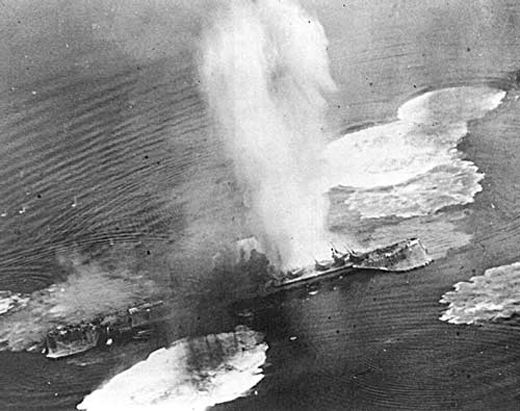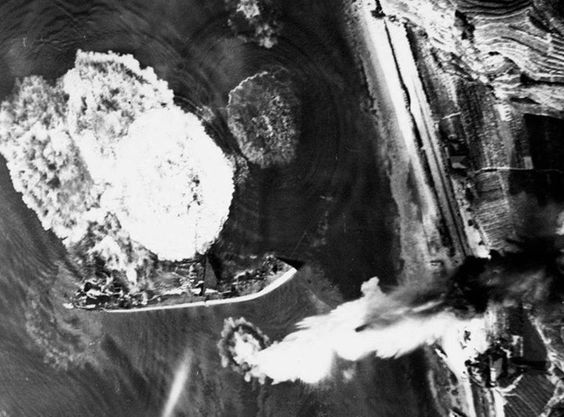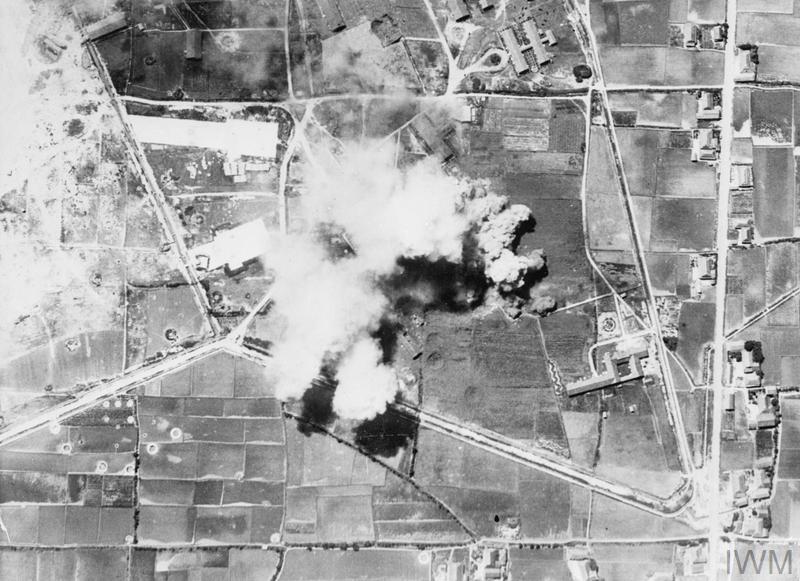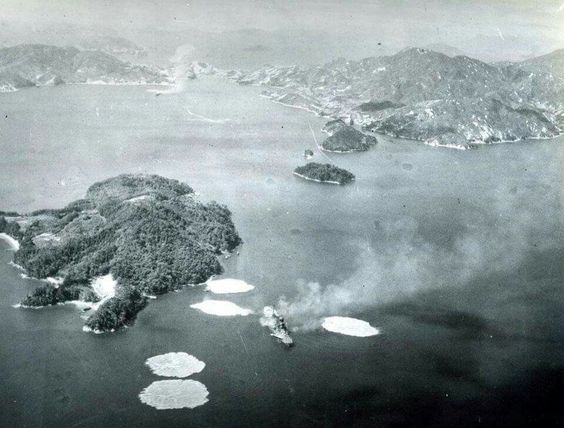Air Operations, CBI
CHINA
- 8 341st Medium Bomb Group B-25s and more than 100 14th Air Force fighter-bombers attack a wide array of targets in northern French Indochina and across eastern and southern China.
- 42nd Medium Bomb Group B-25s attack Itu Aba Island.
- In the V Bomber Commandís first mission from Okinawa, more than 100 B-24s attack the Chiang Wan airfiedl at Shanghai.
- 41st Medium Bomb Group B-25s attack the Lunghua and Wusang airfields at Shanghai.
- 319th Medium Bomb Group A-26s and FEAF B-25s attack the airfields at Tachang and Tinghai.
- FEAF fighters escorting the bombers attack shipping and numerous targets of opportunity throughout the area.
[  | |   ] ]
Air Operations, East Indies - XIII Bomber Command B-24s attack the Oelin and Tabanio airfields on Borneo.
- 42nd Medium Bomb Group B-25s attack the Jesselton airfield on Borneo.
[  | |   ] ]
Air Operations, Japan - 82 58th Very Heavy Bomb Wing B-29s attack metals factories at Osaka. 81 58th Very Heavy Bomb Wing B-29s attack an aircraft factory at Takarazuka. 153 73rd Very Heavy Bomb Wing B-29s attack Kuwana and Osaka. 66 313th Very Heavy Bomb Wing B-29s attack an aircraft factory at Eitoku. 38 313th Very Heavy Bomb Wing B-29s and 75 314th Very Heavy Bomb Wing B-29s attack Tsu. 77 314th Very Heavy Bomb Wing B-29s attack an aircraft factory at Handa. 24 B-29s attack various other targets.
- 91 VII Fighter Command P-51s based at Iwo Jima attack airfields and tactical targets in the Nagoya area.
- Against no aerial opposition whatsoever, US carrier aircraft from Task Force 38 and Royal Navy carrier aircraft from Task Group 37.2 open a punishing series of strikes against targets in and around the Inland Sea, especially against Japanese warships hidden in coves at the Kobe and Kure naval bases. On this first day alone, the carrier aircraft complete 1,747 effective combat sorties. Among many other accomplishments, the carrier aircraft sink the never-used fleet carrier HIJMS Amagi and the battleship-carrier HIJMS Ise at their moorings at Kure. The Amagi is also struck by 11 FEAF B-24s based on Okinawa. US carrier-based F6Fs down 2 C6N 'Myrt' reconnaissance planes s at sea and 13 Japanese fighters over southern Japan between 0745 and 1815 hours.
- During the night US cruisers bombard the Japanese seaplane base at Shionomisaki in southern Honshu.
[  | |   ] ]
Air Operations, Marianas Marine Carrier Air Group 3 (USS Vella Gulf) opens 3 days of strikes against bypassed Japanese bases on Pagan and Rota islands.
[  ] ]
Air Operations, Philippines V Fighter Command fighter-bombers support U.S. Eighth Army ground forces on Luzon.
[  | |   ] ]
Air Operations, Pacific An air armada of 1,600 planes attack Japanese airfields, the naval base at Kure and ships in the Inland Sea. The battleships Hyuga, Ise, and Haruna are sunk.
[  | |   ] ]
Diplomatic Relations At the Potsdam Conference Truman and Churchill mention to Stalin that they have a new and powerful weapon for use against Japan but do not explain what it is. Stalin appears not to understand, but he understands perfectly well. Soviet spies in the US atomic bomb program have been providing critical technical information and have passed word that a test will be conducted soon. Truman's aside confirms that the weapon he knows all about actually works. He immediately orders Soviet scientist to redouble their efforts to develop a workable atomie bomb as soon as possible.
[  | |   ] ]
Pacific - The British and American carriers continue their operations against Japan. There are now 15 US ships and four British. There are extensive air operations on this day. Japanese warships sunk in the day's attacks include the battleships Hyuga, Ise and Haruna, the escort carrier Kaiyo, and the cruisers Aoba and Iwate. During the night a bombardment operation is carried out against Kushimoto and Shionomisaki.
- The US submarine Chub (SS-329) sinks a Japanese tug, formerly Dutch Ginah off northeast Java, Dutch East Indies.
- Mines sink Japanese merchant cargo ships Koichi Maru (873t) in Wonsan harbor, Korea and Himekawa Maru (873t) off Himejima.
- The US destroyer escort Underhill (DE-682) is critically damaged by a Japanese piloted torpedo, and is later scuttled. The Japanese piloted torpedoes (Kaiten) were essentially Long Lance torpedoes fitted with an operating compartment and a conning tower for use by a single crewman.
[  | |   ] ]
United States, Policy Truman takes the decision to use the bomb on Japan if they do not very soon come to terms. Whatever the later doubts about the morality of using the weapon, at the time there is very little doubt. It is simply a question of quickly persuading the Japanese to surrender in order to save the many lives on both sides that would be lost if the Allies invaded the Home Islands. No real thought if given to the possible forms of a demonstration use of the bomb to frighten the Japanese without having to destroy a city.
[  | |  ] ]
Images from July 24, 1945
Japanese Cruiser Under Attack
|
 |
|
Japanese Tanker Under Attack
|
 |
|
British Navy Planes Blast Japanese Airfield
|
 |
|
Japanese Battleship Under Attack
|
 |
|
|



